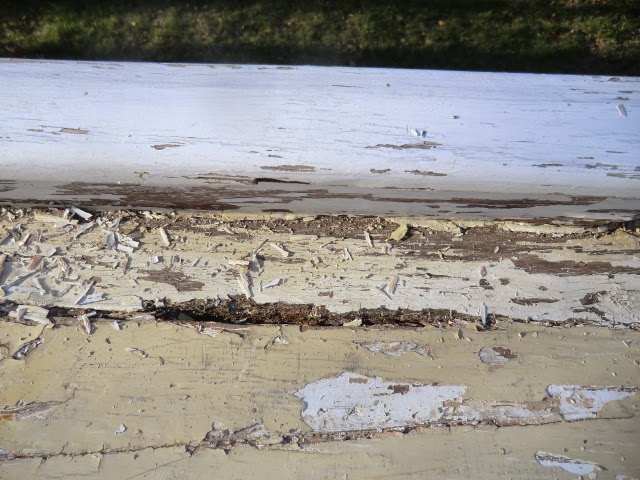Steve came over the day before yesterday, and boy was I glad
to see him. His Cape Dory sailboat Raven is down the street on a mooring in
West Cove.
He lives near where I used to, and I know him from another life, long
ago. He doesn’t get down here much
because of his finish carpentry business and his Christmas tree farm. He didn’t come much at all last year, but as
far as Raven goes, that’s okay
because all he has to do is look at that boat, or anything for that matter, and
all of a sudden it’s perfect. He is one
of those people who if they weren’t so nice and sweet and friendly, you would
loathe with an unspeakable envy. He is
fabulous at everything he does. That’s
how I met him—he decided to try bicycle riding 25 years ago. In two weeks he was better than even the
racers in our group. He decides that
sailing might be fun. Five minutes and he’s
cruising alone to the Caribbean in a perfectly refurbished yacht. During this visit he told me he’d gone to the
Grand Canyon and paddled 240 miles of the Colorado river in 16 days. Of course he did!
There are so few people in this life whose successes and
brilliance I can truly enjoy without reservation or secret jealousy. He is one of them. Oh, I’ve adored him for ages. But he is also fairly perceptive, and back in
those cycling days it was a wise man who steered clear of me. I was not known for my . . . let us just say
. . . stability in the relationship department.
But Steve heard about Jeff
Brown and wanted to come see it, and I was half-dreading the inevitable
visit because there is this part of me that is still so angry and dismayed that
there are these simple things about how to fix boats that I do not know, and
they do, and they are probably right, and so I will look and feel like an idjit
when strangers (practically) come over and say, “Well, of course you’ve tried fastening
the whoozie to the stringers bracing the whatchamacallit, because you can’t
remove paint without somethingorothering to the cotton batting . . .” and I
will blurt out “Bite me” and remain none the wiser.
But no . . .there he was grinning like a maniac on my porch,
happy as always about whatever he was doing that day, which was gathering a
thousand pine cones from the Noank Shipyard’s trees to make wreaths in
November. Plus he was going to do a
little work on Raven. He had brought all these very cool
tools. He adored Jeff Brown, was just
fascinated by it, and then suggested, ever so gently, that really a boat like
this deserves, well, perfection.
I told him I did not think that was what the current
overseers had in mind. But I somehow
forgot this about Steve—nothing in this world deserves to be done half-assed,
especially something old and pretty and made of wood. So we got onto the deck
and he brought out the Milwaukee heat gun—a magnificent contraption that, in
his hands, practically chased the paint off the deck and made my preliminary
sanding job look like crap. “You’ll
still have all those craters, even if you feather it, but if you take the paint
off, then you can sand it and with a good coat of primer you won’t need to
paint it every year; it will be great.”
He discussed scraper types, how to hold it, and told me to file the
sander if it got dull. With all those new
scarper-filing skills I developed at some point.)
Then, like a crack dealer, he showed me the detail sander—a
snazzy, zillion-dollar model called Fein, which he said was “worth every penny”
and which I doubt either Paul or Bruce owns, but we zipped around fittings and
dug into corners and I thought, oh my Christ I will be here forever now.
Bless Steve’s heart, he left me the heat gun but had to take
the sander (good-bye, little marvel!), wished me luck, and poof! he was gone.
So yesterday I had a go at the heat gun.
Funny thing, it is not as easy as it looks. In fact, it is
an art. But when I slowed down and worked with the grain, it got a little
easier (although I thought the boat would self-immolate at any second).
I then decided to abandon the deck and just concentrate on the black bulwark
(scupper area) and the black rail below that. (oh, and Steve also suggested we
remove the brass rubrail to get at the wood underneath. The boys will love that.)
It took me about an hour to do about a third of one side.
I hope the heat gun and my arm hold out!
Before (left) and after--it's worth it but man, my progress is turtle-like
This is as far as I got yesterday. I think when it's sanded (and of course all the cracks are filled) it will be swell.
But oh my god what am I going to do about the deck? That will be frigging hours of work! But it looks so much better than just being
sanded.
[I will confess I went online to see how much electricity a heat gun uses. Surprisingly, not much; about 18 cents an hour, or $27 a month for 5 hours a day every day. Which I will not be doing! Hey, I had to look. I am nothing if not frugal.]
The green part has too much paint to take off that way.
Paul is not answering my cries for help.
He is letting me stew in Steve’s taunt of perfection. I really should adhere to the old 12-step
slogan: progress, not perfection.
I knew there was a lesson in here somewhere!

















